
My Russia is a cultural and ethnographic center (ethnopark), which is an entertaining and informative space where various regions of Russia are represented in miniature.
The My Russia Ethnopark is located in Esto-Sadka (Krasnaya Polyana) along the left bank of the Mzymta River, upstream from the Rosa Khutor resort.
My Russia is an interactive park with a completely pedestrian area, where you can enter buildings representing a particular region of Russia.
On the territory of the ethnopark there are cafes and restaurants, souvenir shops, a shopping gallery and hotels.
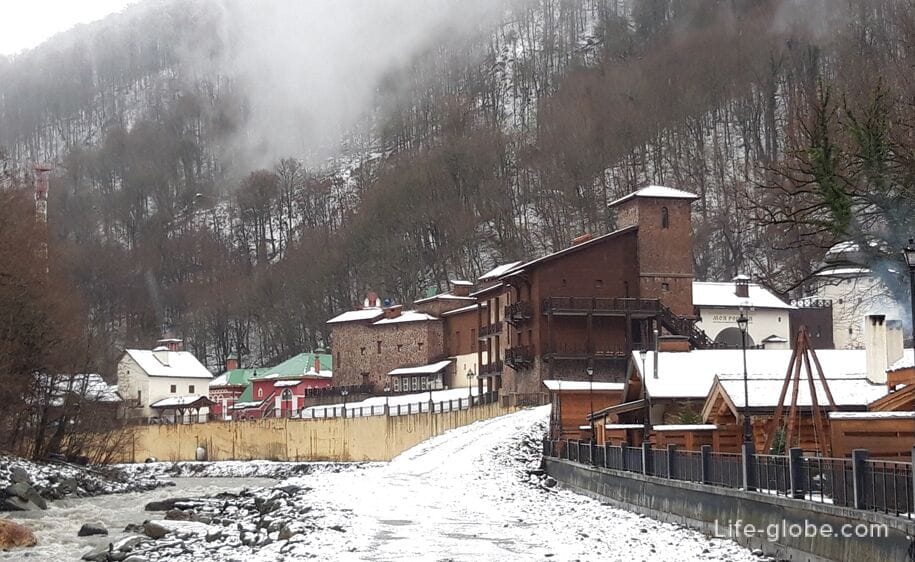
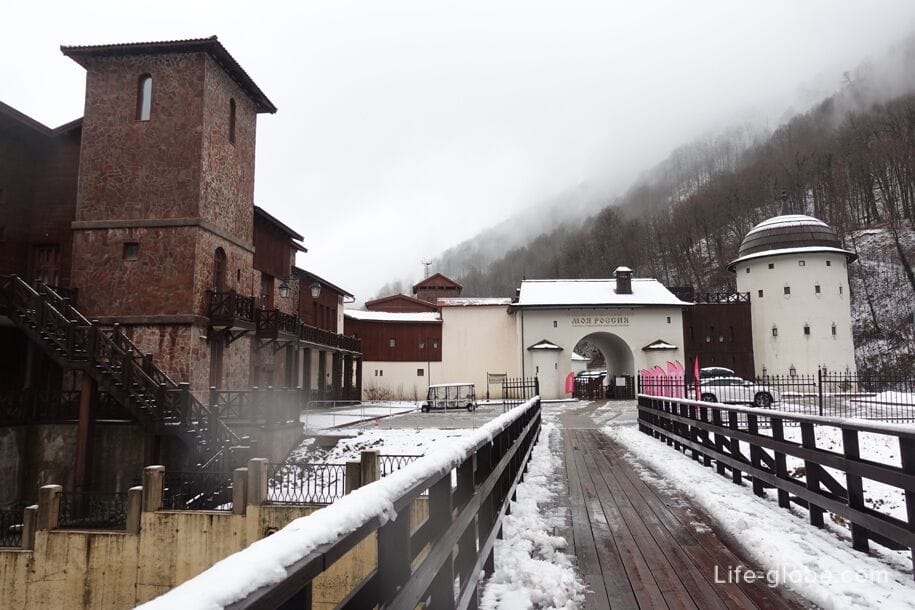
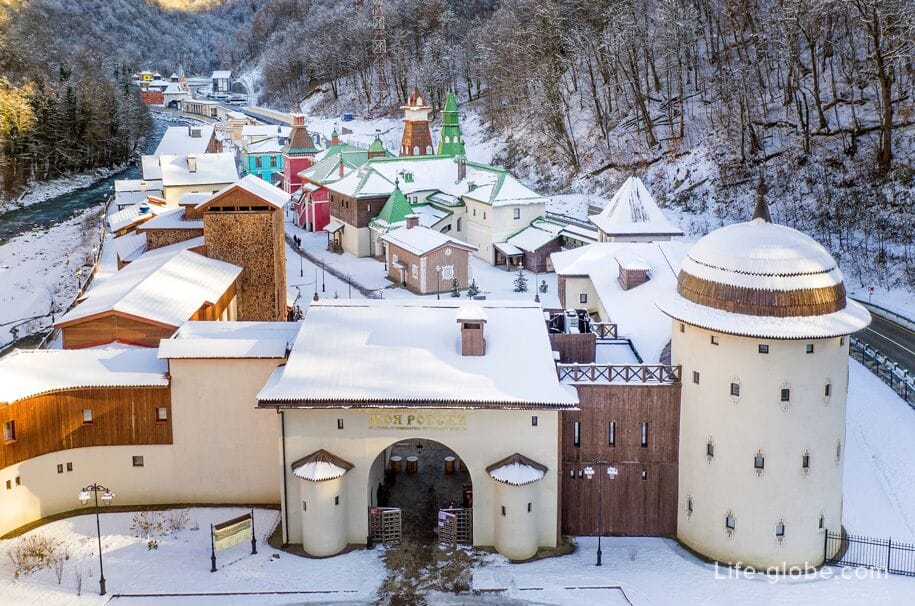
On the territory of the park, for the convenience of guests, there are signs and information signs.
A walk through the park is a "mini-journey through Russia", in which immersion in the cultural heritage takes place in an interactive format: show excursions, game programs, creative master classes and staged performances.
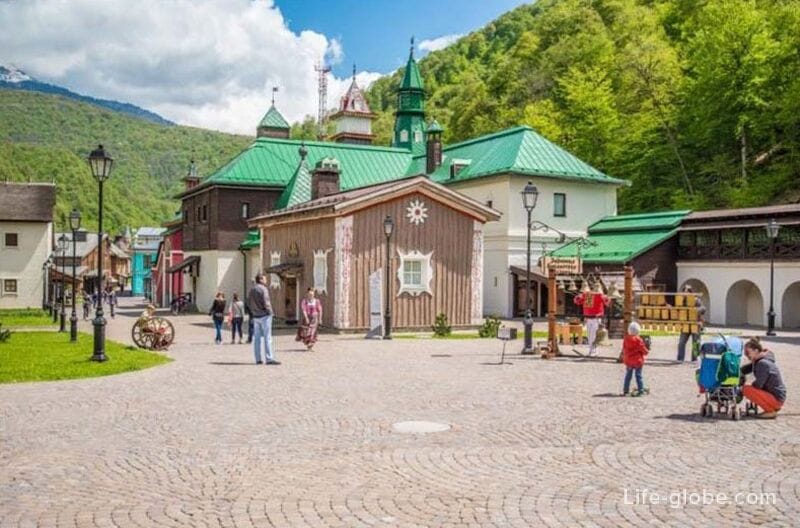
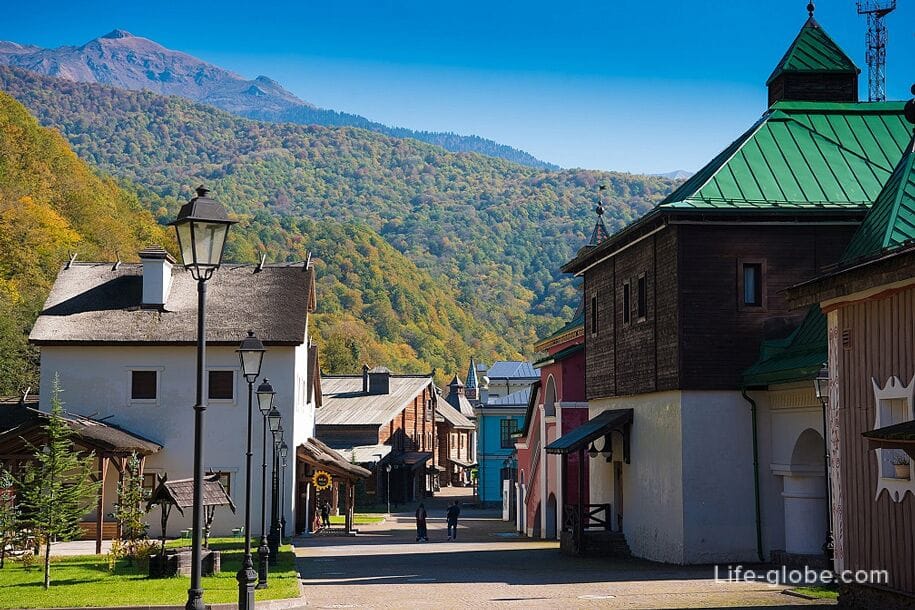

The territory of the ethnopark has 3.3 hectares, on which there are 11 thematic zones with buildings (pavilions) divided into several sectors according to the geographical principle, stylized and illustrating the history, culture and life of various regions and peoples of the Russian Federation.
Thematic sectors of the My Russia Park (from west to east): The Caucasus with an authentic tower, Suzdal-Central Russia with church buildings, Krasnodar Territory with characteristic farmsteads, Moscow with the famous Kremlin, the Russian North with wooden architecture, St. Petersburg with elegant architecture, Kazan with The Kazan Kremlin, the Urals with Demidov factories, Siberia with wooden log cabins, Buryatia with a Buddhist temple.
Inside the buildings of the park there are compositions and exhibitions, some of which are replaced from time to time. For example: exhibitions of folk crafts, weapons, dolls, a museum of money, workshops, etc.
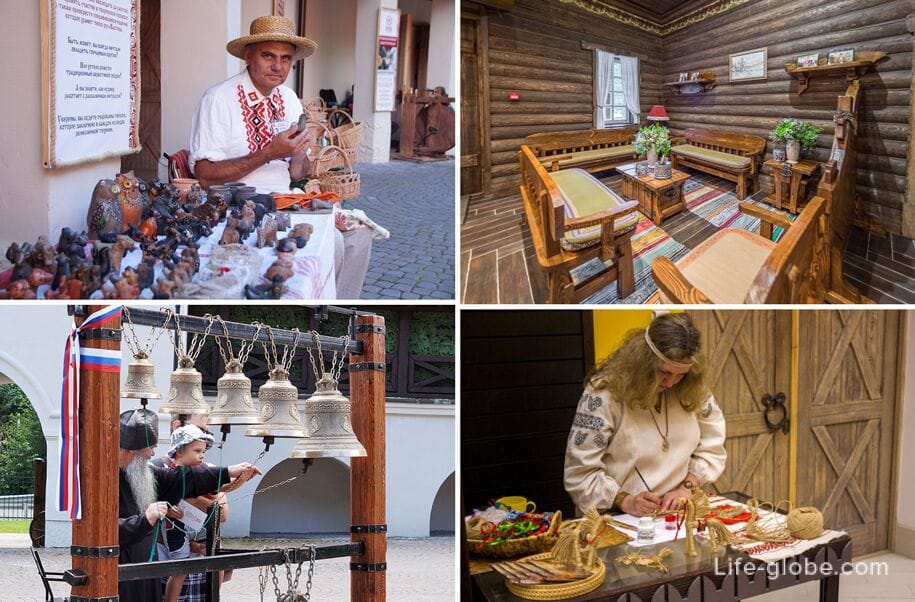
There are a large number of architectural monuments in the Caucasus, the most outstanding of which are medieval towers.
The beginning of tower construction is attributed to the early Middle Ages. The typical style of the Caucasian Ossetian tower with characteristic features developed in the late Middle Ages, approximately in the 17-18 centuries.
The towers were built as a defensive, combat, and often residential structure.
In the Caucasus Pavilion:
- exhibition "Folk crafts of Dagestan";
- master classes of metal inlay on wood and carpet making;
- folk crafts of Russia.
In the architectural appearance of Suzdal, it was the monasteries that became the main part of the urban topography.
Suzdal is now called a museum city, and it is really an ancient city. Russian Russian chronicles mention it since the 11th century, from which a whole epoch in the development of Russian culture and statehood begins.
In Suzdal, architectural monuments of the 13th-19th centuries occupy a special place: temple complexes and civil buildings, of which there are more than two hundred.
In the Suzdal Pavilion:
- exhibition "The History of Money in Russia";
- master classes for children and adults on painting nesting dolls and glass products, weaving "money" trees from gems, dry felting of Orenburg shawls and creating Old Slavic amulets.
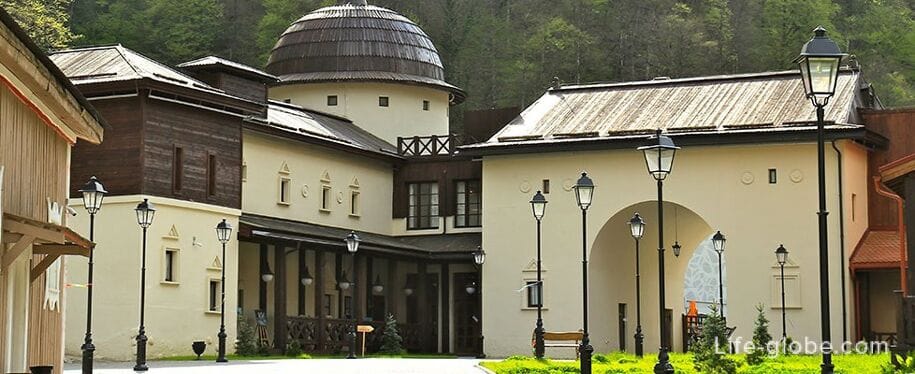
This is a show museum where guests are shown the process of making candles using the technology of the 16th century and an icon painting workshop, where icons with gold leaf are created right before the eyes of visitors.
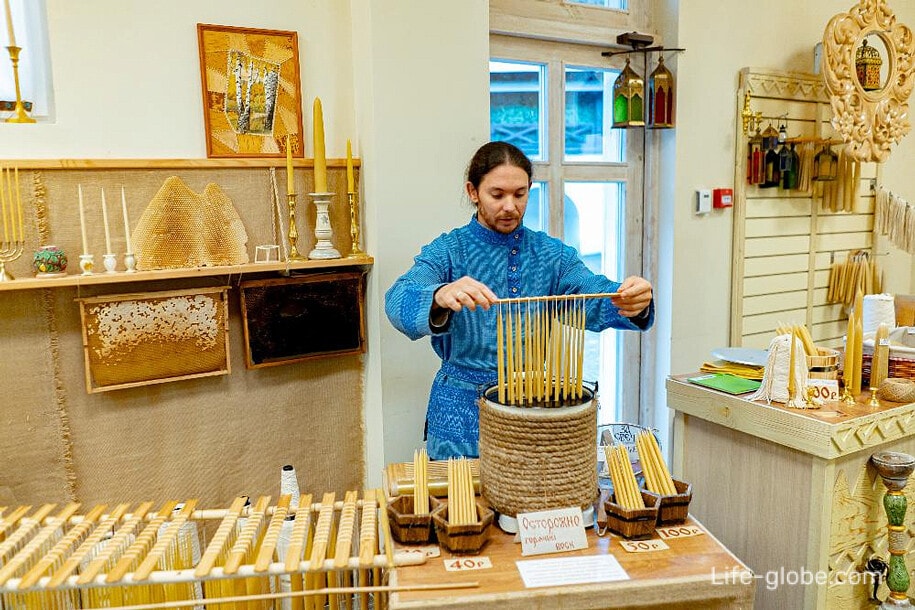
"Streletsky Dvor", where master classes in traditional archery are held.
Kuban, due to the peculiarities of its historical development, is a unique region where elements of the cultures of South Russian, East Ukrainian and other peoples have interacted, interpenetrated and formed into one whole for two centuries.
The main feature and now the attraction of Kuban are "Cossack huts", which were built as follows: along the perimeter of the house, the Cossacks buried large and small poles - "ploughs" and "podsoshniki", which were intertwined with vines; when the frame was ready, relatives and neighbors were called for the first smear "under the fists" - this is when clay mixed with straw was hammered into the fence; a week later, a second smear "under the fingers" was made - when clay mixed with sex, they were crushed and smoothed with their fingers; for the third "smooth" smear, the floor and dung (manure thoroughly mixed with straw cutting) were added to the clay.
Public buildings: the ataman's board and schools were built of brick with iron roofs. They still adorn some Kuban villages.
The interior of the Kuban dwelling was basically the same for all districts of the Kuban. The house usually had two rooms: the great (vylyka) and the small hut. In the small hut there was a stove, long wooden benches, a table (cheese). In the great hut there was furniture: a cupboard for dishes: ("slide" or "square"), a chest of drawers for linen, chests, etc. The central place in the house was the "Red Corner" - "bozhnitsa", which was decorated in the form of a large kiosk consisting of one or more icons decorated with towels, and a table - square.
In the Krasnodar Territory pavilion there is a "house of honey", which presents different types of honey: chestnut, White acacia, Mountain Alpine, etc.
The most significant change in the overall architectural appearance of Moscow was the construction of a new stone Kremlin, which further distinguished its ensemble among the wooden urban buildings, as a result of which the Kremlin finally became the dominant center of the capital. This also contributed to its importance as the seat of the government of the Russian state.
Even today, the Moscow Kremlin is not only the main attraction of Moscow, but also of the whole of Russia.
In the Moscow Pavilion:
- restaurant "Moscow" with a menu of traditional Russian dishes;
- the chocolate museum, which tells about the history of the development of the chocolate business in Russia. The museum hosts master classes with tasting.
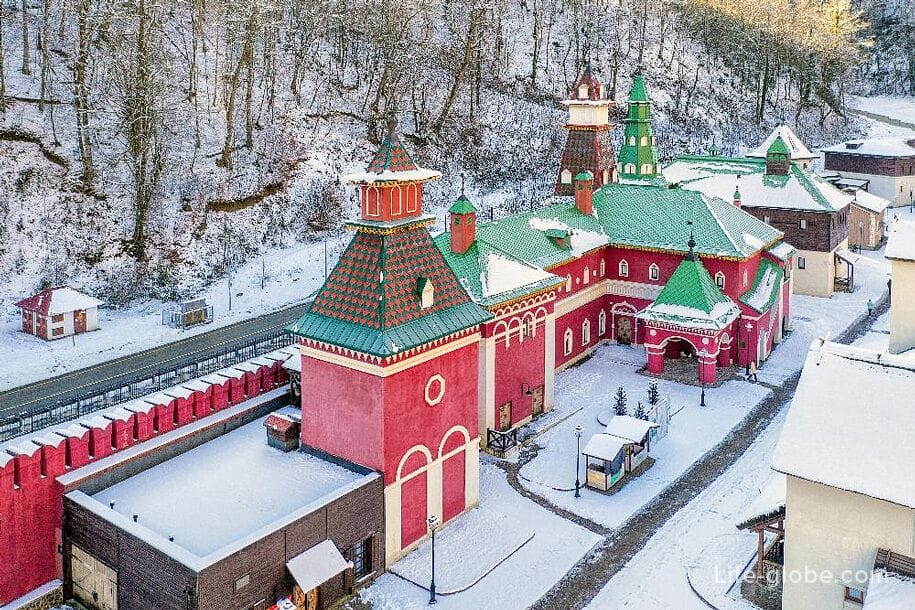
Wooden architecture became the basis of a special style of Russian medieval architecture, which implies an optimal combination of beauty and functionality of buildings.
The main, and often the only, tool of the builder for many centuries remained the axe. The fact is that the saw tears the wood fibers during operation, leaving them open to water. The axe, crushing the fibers, as it were, seals the ends of the logs. No wonder, they still say: "cut down the hut".
The easy availability of the material, its self-renewal and ease of processing allowed wood to become the main building material for the construction of buildings and structures for various purposes in the North of Russia. By the middle of the 19th century, residential peasant houses were house complexes that combined both residential and utility premises under one roof.
The largest number of preserved wooden buildings in Russia are located in the Arkhangelsk province. Since the buildings were scattered and located at a distance from each other, therefore, at one time, some of the buildings of special interest were moved to the architectural and landscape museum in the village of Malye Korely, which is located near Arkhangelsk.
Another architectural ensemble is located on the island of Kizhi in Karelia. According to the concentration of heritage objects, the Kizhi Museum-Reserve is a unique historical territory.
In the Russian North pavilion:
- interactive museum "Ivan the Terrible's Oprichnina" with exhibits of instruments of punishment during the reign of Ivan the Terrible;
- antique shop.
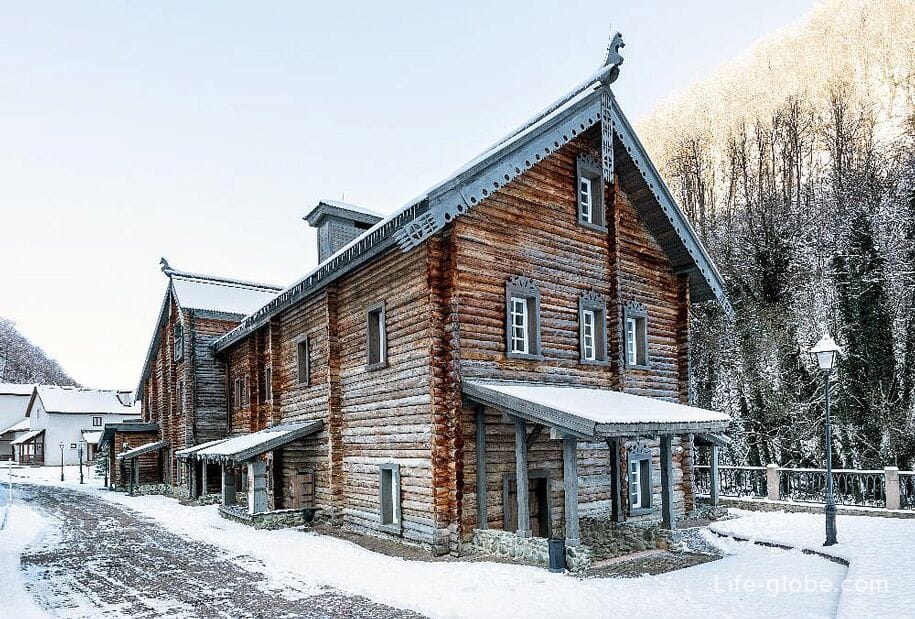
During its existence, St. Petersburg has become one of the most magnificent cities in the world. Thanks to Peter I, who decided to build the city according to European canons, as well as his successors in this thought, including Anna Petrovna and Catherine II, the historical influence of Italian, German, Dutch and French architectural traditions can be seen in St. Petersburg architecture.
By right, St. Petersburg is called the cultural capital Russia, because a huge number of architectural ensembles and monuments, museums and cathedrals, palaces and garden and park complexes are concentrated in the city and its surroundings, striking with their stylistic diversity and splendor.
In the St. Petersburg Pavilion:
- exhibition and sale of "Faberge". The history of the creation of jewelry Easter eggs by the Faberge house;
- neon installation "Academy of Magic" - a neon fairy tale for children and adults.
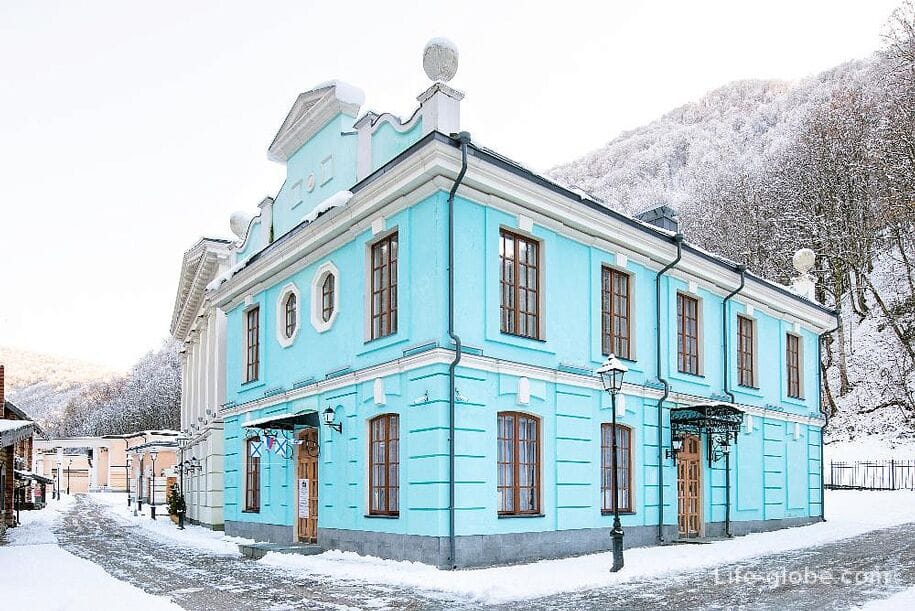
The Kazan Kremlin is perhaps the most famous and monumental building in Kazan, which is a complex that was originally erected as a defensive one and includes walls and towers, as well as archaeological fragments of fortifications, a cathedral, a mosque, courtyards and other structures. Museums and exhibitions are held on the territory of the Kazan Kremlin.
For centuries, the Urals have played (and still plays) an important role in the history of Russia. This is a land of vast opportunities, storing untold riches in its land. The Urals has always been distinguished by its industrial character. The enterprises of local industrialists and, above all, the Demidov factories, whose products were known throughout the They became the material base of Russia's rapid breakthrough in the 18th century, and moreover, the Ural metal opened a wide road for Russian exports.
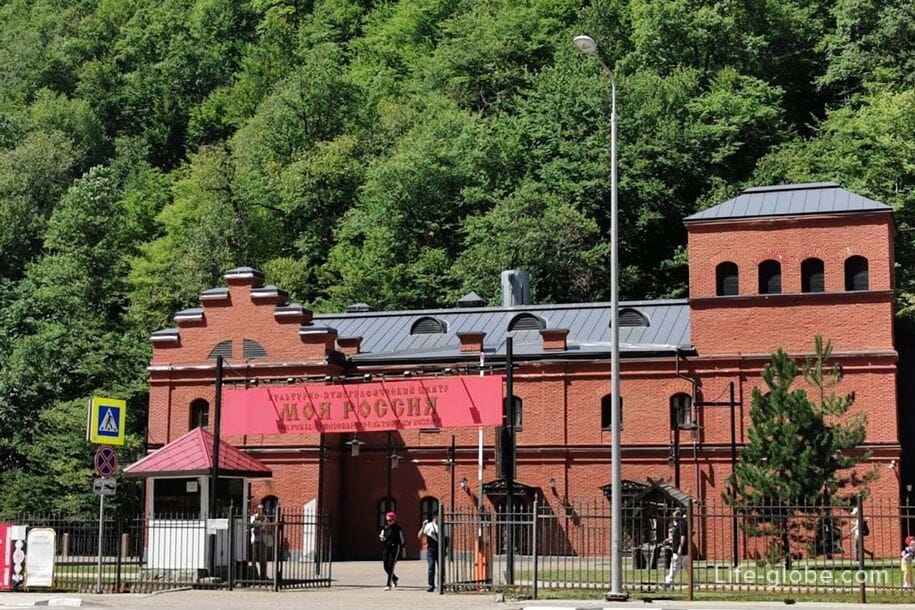
Ostrog is a small wooden defensive fortification built since the times of Ancient Russia to protect places of secondary importance (most often on the borders with peoples who are not familiar with siege work). During the annexation of Siberia in the late 16th-early 18th centuries, the prisons were placed at points of great strategic importance for the protection of Russian possessions, the subordination and control of the surrounding aboriginal population, and the implementation of communication.
In the Siberia Pavilion:
- show-museum "Stone Heart of the Urals" with a collection of minerals and stone products, from the Mesozoic period to the Chelyabinsk meteorite;
- cafe-pelmenaya.
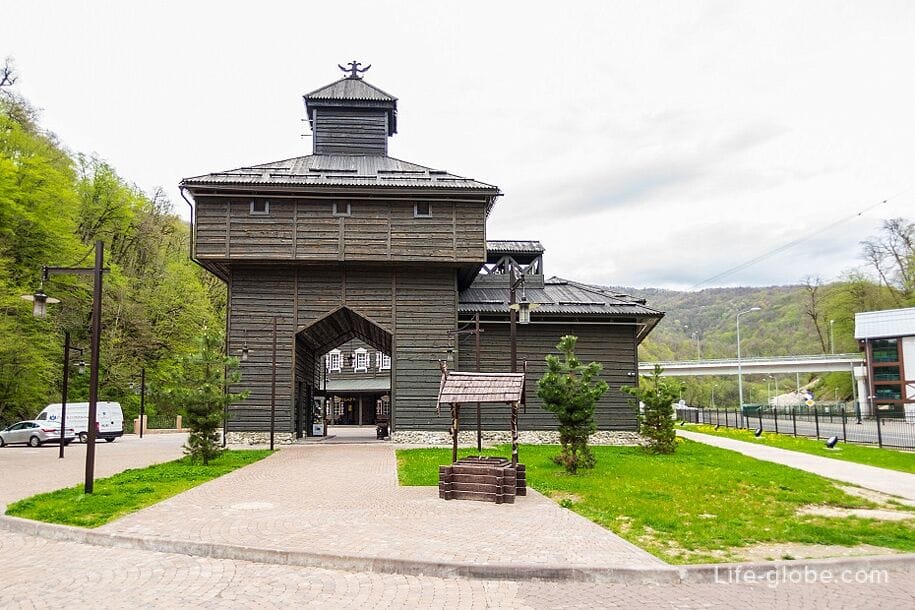
Historical evidence suggests that, since the 2nd century BC, the proto-Mongol peoples (Hunnu, Xianbi, Khitan) were familiar with Buddhism. On the territory of the Ivolginsky settlement, the remains of Buddhist rosaries were found in a Hun burial.
In 1741, Empress Elizabeth Petrovna adopted a decree recognizing the existence of the" Lamai faith " and approving the number of datsans (11) and the number of full-time lamas (150). Buddhism was officially adopted as the state religion in the Russian Empire.
The architecture of the datsan symbolizes the divine body of the Buddha.
In the Buryatia Pavilion:
- art gallery "Jewels of Baikal", where you can get acquainted with the works of art of world-famous artists, sculptors and gunsmiths of Buryatia;
- exhibition of works by the artist-genius, participant of the Venice Biennale and Christie's auction Zorikto Dorzhiev;
- relaxation center-a wellness complex with singing bowls, moxotherapy, a tea ceremony and a Khurde prayer drum.
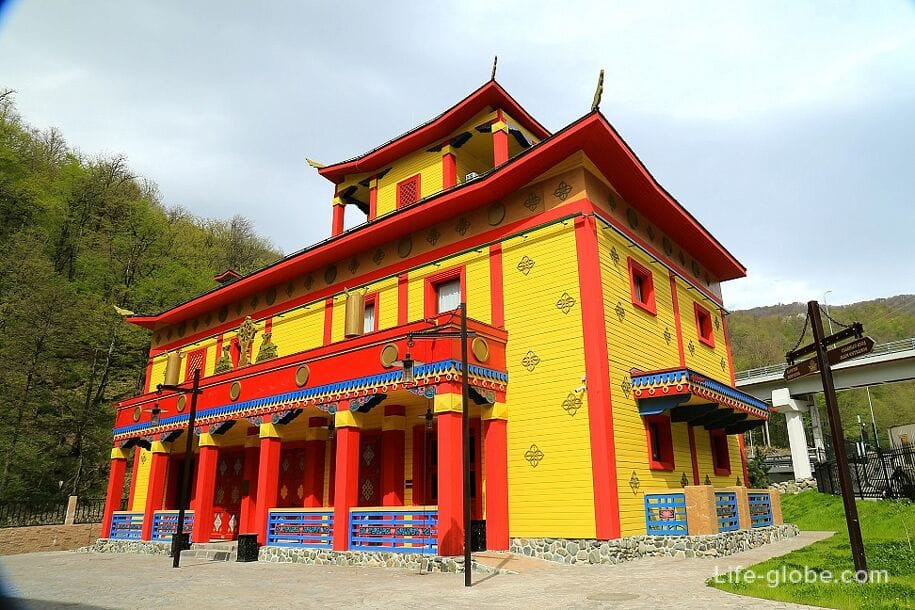
On the territory of the park there is a central square, where the fun "Interactive" Bogatyrskaya Zastava " takes place, where anyone can become an epic superhero - bogatyr. They also conduct archery training, teach how to handle armor and prepare for the test strip in training equipment: with a shield, helmet, sword and in chain mail.
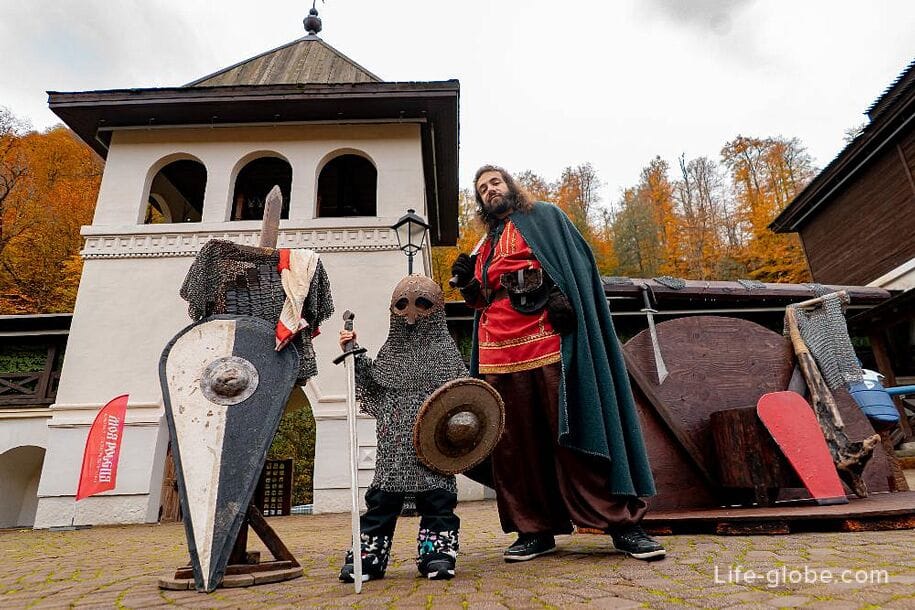

The ethnopark "My Russia" is located in Esto-Sadka, near the lower station of the ropeway "Rosa Khutor" behind the concert hall "Rosa Hall", at the address: Lavender Embankment, 9. On the same side of the Mzymta River as"Rosa Hall".
GPS coordinates: 43.671084 40.30552 (43°40'15.9"N 40°18'19.9"E).
The Ethnopark is open all year round. Holidays and festivities are held in the park: New Year and Christmas, Maslenitsa, etc.
Entrance to the park is paid. Tickets to the park can be purchased at the ticket office located directly near the entrance to the park, as well as online in advance on the website. !!! When buying tickets on the website, sometimes there are discounts.
The cost of tickets at the ticket office: adult (from 15 years) - 500 rubles, children (from 7 to 14 years) - 250 rubles. The entrance ticket includes a free sightseeing tour of the ethnopark. Excursions are conducted every hour from 11: 00 to 18: 00 hours; the duration of the excursion is 45 minutes; the group gathers and the tour begins next to the "Bread-Salt" sculpture (on the square after the entrance arch). The ticket price may change!
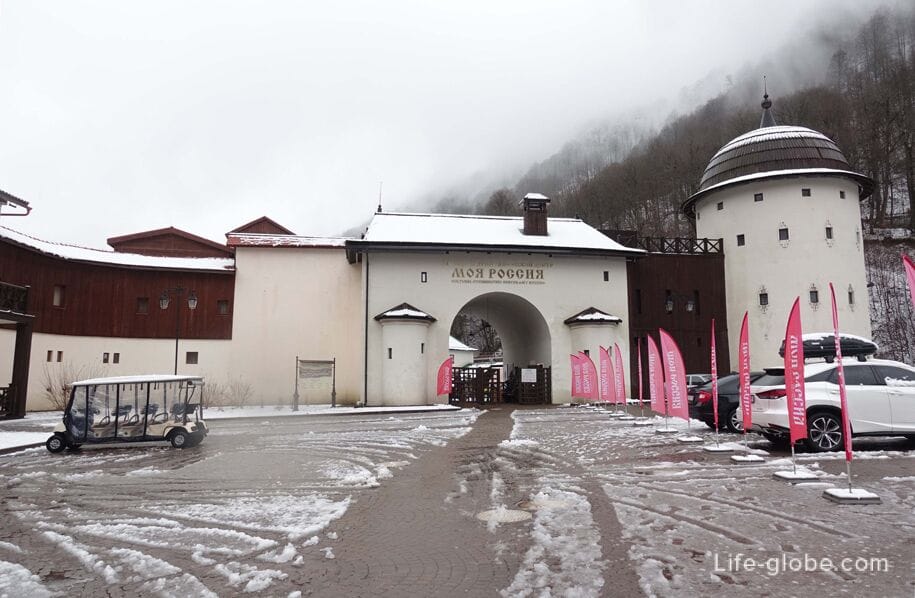
All the necessary up-to-date information about the ethnopark, including opening hours and the exact cost of tickets, can be found on the park's website.
The website of the ethnopark "My Russia": mrsochi.
For information: my-russia.
There is a car parking near the ethnopark.
More information about how to get to Esto-Sadok (Krasnaya Polyana), including the ethnopark "My Russia", can be found here →
There are several hotels located on the territory of the ethnopark "My Russia"
4-star boutique Hotel Lermontov Russian Seasons with family rooms, a restaurant and free parking.
The rooms are equippedwith a balcony, a flat-screen TV, a coffee / tea maker, air conditioning, a safe and a hairdryer.
Breakfast can be included in the room rate. Link to the boutique hotel
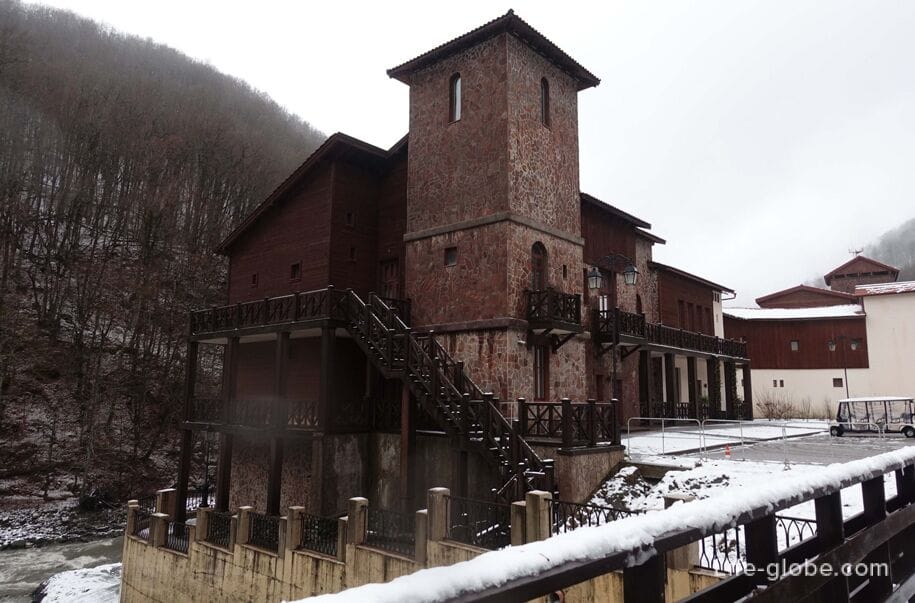
4-star Kizhi Russian Seasons Boutique Hotel offers family rooms, a garden, a restaurant, a bar, a shared lounge, free parking and free Wi-Fi.
The rooms are equipped with airconditioning, a flat-screen TV with satellite channels, a kettle, a shower, a hairdryer, a desk, a wardrobe and a private bathroom.
Breakfast can be included in the room rate. Link to the boutique hotel
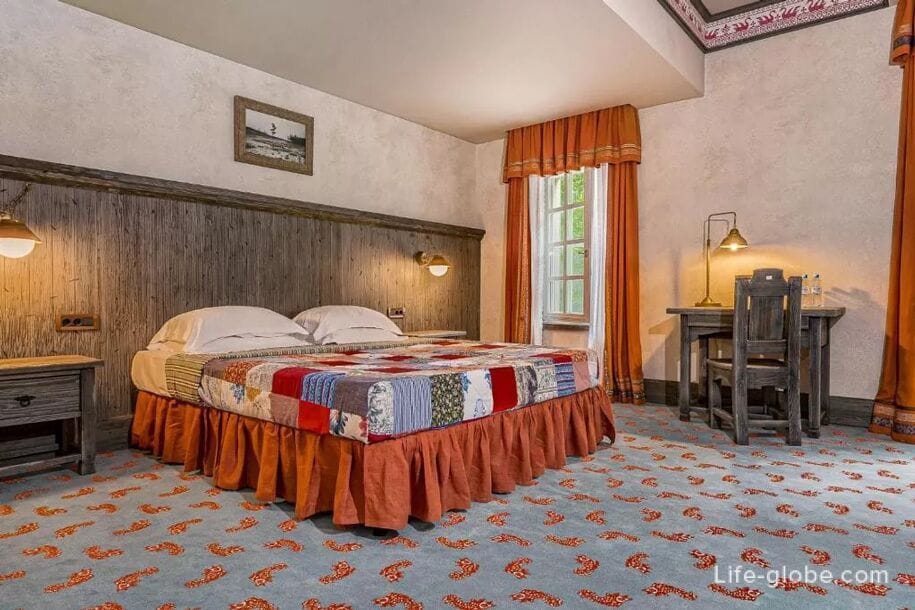
Nevsky Russian Seasons is a 4-star boutique hotel with a restaurant, a bar, free parking and free Wi-Fi.
The roomsare equipped with a flat-screen TV, air conditioning, coffee / tea maker, mini-bar, safe and hairdryer.
Breakfast can be included in the room rate. Link to the boutique hotel
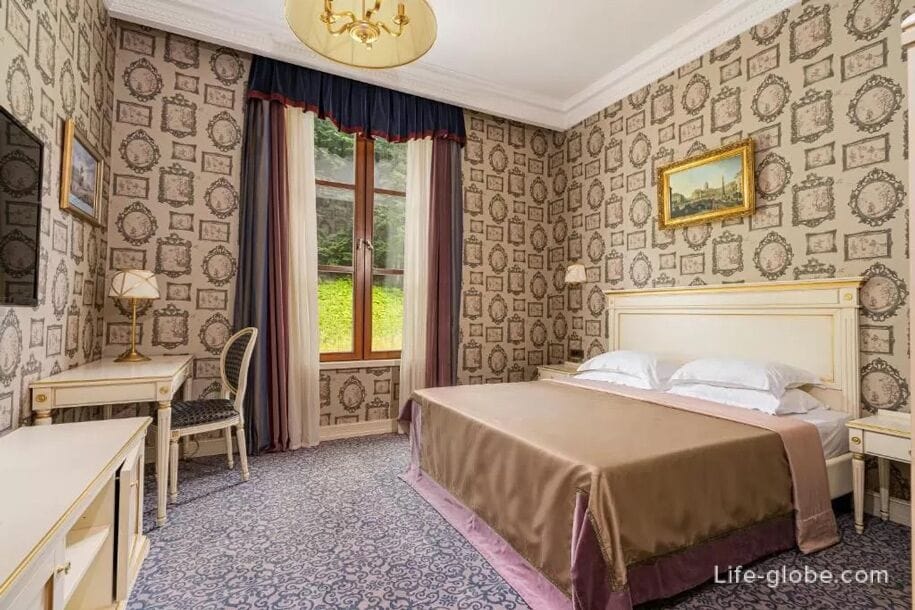
The 4-star Hotel Siberia offers hypoallergenic rooms, a restaurant, a bar, free Wi-Fi, a 24-hour front desk and free parking.
The rooms are equipped with airconditioning, a flat-screen TV with cable channels, a refrigerator, a kettle, a safe, a hairdryer, a desk, a wardrobe and a private bathroom.
Breakfast can be included in the room rate. Link to the hotel
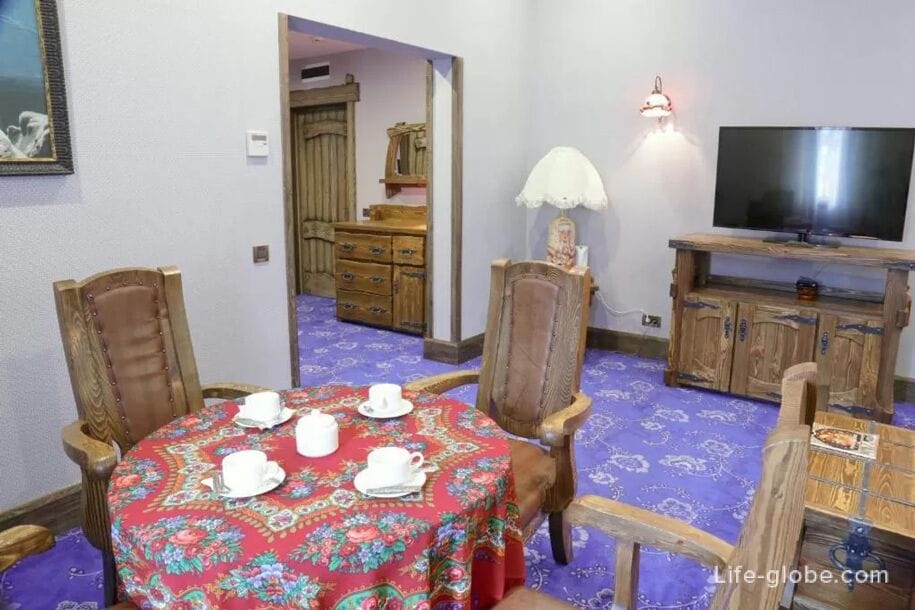
All accommodation facilities in Estosadok (Krasnaya Polyana) can be viewed and booked here